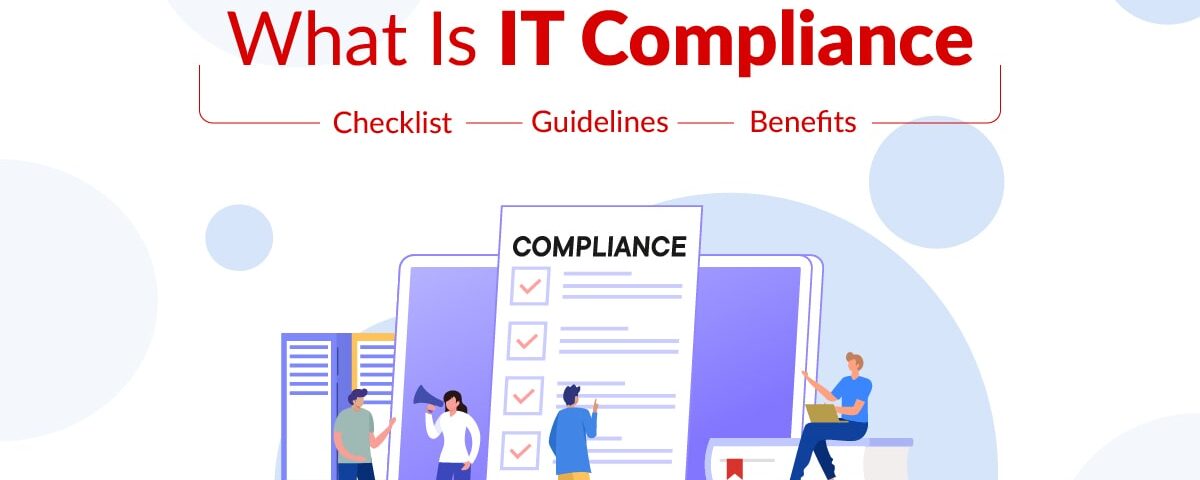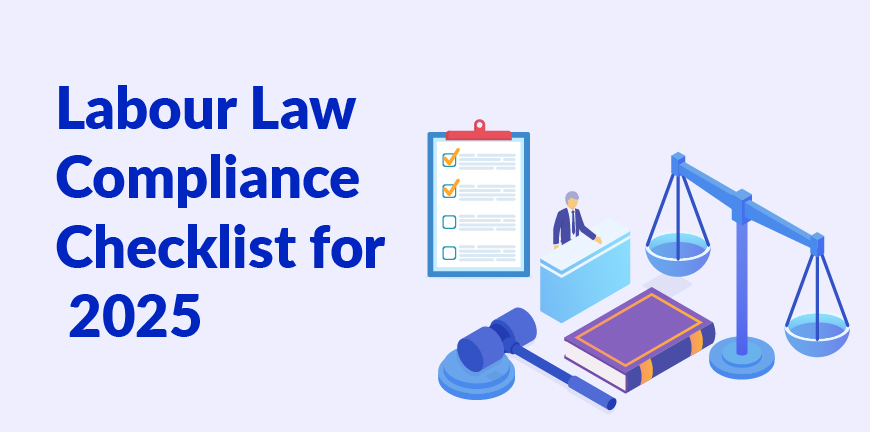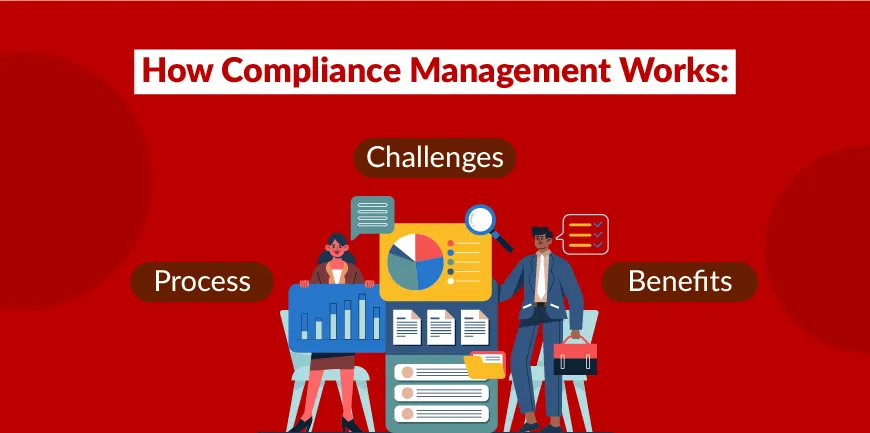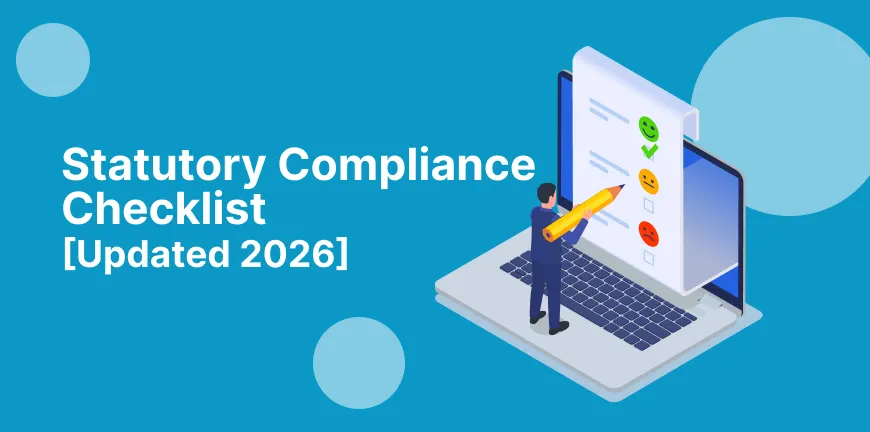
HR Recruiter Roles and Responsibilities in 2025
31/05/2025
5 Payroll Industry Trends to Watch for 2025
31/05/2025India has surpassed Japan to become the 4th largest economy across the globe thanks to its rapidly growing business landscape. Currently, most companies are unleashing the “Digital First” approach to streamline their business operations and increase their brand value.
As organisations across India (especially Tier 1 and Tier 2 cities) are leveraging cloud infrastructure as pillar for success, regulatory restrictions to Information Technology practices have also become stricter to ensure transparency and safeguard user data from falling into wrong hands.
Deploying robust IT policies and practices that align with IT regulations stipulated by IT Ministry of India to safeguard sensitive data from cyber threats, phishing attacks, unauthorised access, hacking, etc., has become non-negotiable as it can lead to devastating consequences.
Let’s learn how companies can achieve 100% IT compliance and gain a competitive advantage through a robust IT compliance audit checklist and following best practices.
What Is IT Compliance?
IT Compliance meaning is simple and clear, and it states that ” IT Compliance is a systematic and transparent process of ensuring a company’s IT system and policies adhere to laws and standards specified by the government bodies under state and central jurisdiction.”
Some of the IT compliance types and standards under which companies build and deploy their internal IT policies and procedures include:
1. Health Insurance Portability and Accountability Act
This regulation’s main goal is to ensure healthcare centres and providers implement security measures and policies to protect patient data against breaches and unauthorised access.
2. Payment Card Industry Data Security Standard)
This standard enforces credit card service providers to develop safety protocols to make sure credit card data and transaction details are protected against hacking and other unethical practices.
3. Systems and Organizational Controls
Cloud service providers must be compliant with SOC2 standard to maintain and control organisational data on cloud environment.
4. Sarbanes-Oxley Act
Under this regulation, publicly traded companies must ensure financial data and other investor information is protected against breaches and other cybersecurity threats.
Any company that deals with financial data must implement the SOX compliance IT checklist to ensure internal policies, procedures and operations adhere to SOX Act.
5. GDPR (General Data Protection Regulation)
Companies that are managing sensitive business and employee data must adhere to GDPR guidelines to avoid penalties and legal hassles.
Why IT Compliance Matters?
The main objective of an IT compliance strategy is to protect user data at any cost. The risks of failing an IT compliance audit are significant and can lead to dire consequences leading to legal troubles, and reputational damages for the organisation.
Here are the reasons that highlight the importance of IT compliance for any organisation that runs its operations on digital platforms:
1. Legal Protection
Overcoming IT compliance challenges and ensuring complete adherence to IT regulations and laws will help companies prevent penalties, lawsuits, and sometimes even criminal charges to repeat violations.
2. Data Security
Adherence to IT compliance norms ensure all data related to business operations and employees are stored and controlled in a secured environment.
Companies that run their operations on digital platforms must implement strong security measures like encryption, multifactor authorisation, periodic password change policies, user access controls, ban access to unauthorised websites, and conduct regular IT compliance audits to prevent data breaches and maintain stakeholder trust.
3. Brand Reputation Management
In the current business landscape trust is everything especially when most business operations are carried out in a third-party cloud environment. Companies that showcase their strong commitment towards maintaining IT compliance will gain a lot of trust among customers and stakeholders leading to enhanced brand reputation and continued business growth.
4. Operational Efficiency
To ensure IT compliance, companies must streamline the IT policies, operations, and procedures to align with regulations. This approach will not only prevent non-compliance but also improve operational efficiency, productivity, and other improvements because of the domino effect.
How to use IT Compliance Checklist?
Navigating through different IT complaint standards like HIPAA, SOC 2, PCI-DSS, etc., has its own set of challenges since they cater to data and cyber security for various sectors. However, most guidelines overlap allowing companies to create a standardized IT compliance audit checklist that helps streamline IT policies and procedures that hold good for all types of IT regulations and laws imposed by government agencies.
6 Key steps included in the IT compliance audit checklist
1. Risk Assessment
The IT compliance team must regularly assess current IT policies and procedures to identify potential non-compliance areas, especially with data security and user access controls.
2. Develop Security Policies and Procedures that Covers All Basis
To overcome regulatory hurdles, the internal IT compliance team must develop comprehensive security policies and procedures and implement them across the organisation diligently.
3. User Access Controls
The management must strongly enforce rules that allows access of sensitive data only to authorised users across the company. Deployment of security protocols like MFA (Multifactor authentication), encryption, role-based access controls, etc., is critical to ensure all sensitive data related to the organisation are protected from cyber threats and other issues.
4. Data Loss Prevention and Disaster Management
Even with the best compliance policies and procedures in place, we can’t rule out the possibilities of IT infrastructure failures and loss of data. The internal audit team must conduct periodic IT compliance reviews and make further modifications to the existing IT policies and procedures to reduce the instances of data loss and infrastructure malfunctioning.
5. Incident Response and Reporting
There should be an action plan to identify, assess, and respond to IT-related incidents such as hacking, unauthorised access, data leaks, and other issues. A reporting mechanism must be implemented to create and record detailed reports of such incidents and presenting it to the relevant stakeholders for further evaluation.
6. Periodic Auditing and Continuous Monitoring
Regular IT compliance audits may be for every 3 months, help in identifying discrepancies and vulnerabilities in the IT infrastructure at an early stage.
Additionally, continuous monitoring of IT operations is essential to quickly identify issues and mitigate them on priority. Based on internal and external IT compliance audit results and recommendations, the procedures and policies must be improved to always ensure compliance.
What are the Benefits of IT Compliance?
The key advantages of having a robust IT Compliance management system include:
1. Proactive risk management
The IT compliance regulatory frameworks make regular risk assessments which in turn help the IT team to identify and fix issues and flaws proactively making the operations more streamlined.
2. Increased business opportunities
A strong commitment to IT compliance will increase trust among stakeholders and end customers leading to increased business opportunities and higher productivity.
3. Prevent penalties and legal hassles
Prompt adherence to the IT compliance audit checklist will ensure the internal policies and procedures related to IT are aligned with the regulatory standards preventing hefty fines and lawsuits.
4. Increased employee loyalty and retention
IT compliance ensures transparent and ethical IT practices are in place creating trust among employees that their information is in safe hands. It will create a culture of loyalty increasing employee retention rates and attracting top talents to join companies that are strongly committed to IT compliance.
What are the Best Practices for IT Compliance?
Here are the best practices for IT compliance that most companies have implemented to achieve favourable outcomes:
1. Perform Regular IT Compliance Audits
IT compliance audit is critical to identify, evaluate, and mitigate potential risks and IT-related non-compliance issues proactively. A comprehensive audit will give a clear picture of the level of adherence to internal IT policies with the regulatory requirements stipulated by the state and central governments of India.
2. Deploy Robust Security Measures
Cybersecurity and compliance go hand-in-hand as without strong security measures achieving IT compliance is not possible. The security protocols like encryption, MFA (multifactor authorisation), and user access controls must be promptly implemented across the organisation and the management should ensure all employees and managers follow the guidelines to the core.
3. Provide Regular Training to Employees
For IT compliance efforts to be successful, the employees must follow the internal guidelines and policies related to IT promptly on a day-to-day basis. A company must conduct regular training on IT policies and procedures to help the employees understand the importance of compliance and strictly following practices like changing passwords frequently, never providing credentials to another employee, raising an alarm in case there are security breaches, etc.
4. Stay Updated with the Latest Regulations
As technology is getting more advanced regulatory updates are also inevitable to control unethical practices and protect sensitive data of the users. An IT compliance audit checklist useful for now may not be applicable in the next 6 months as there might be amendments and changes made to the relevant regulations.
A company must always be vigilant and ensure the compliance team stays updated with the latest regulations and make modifications to IT policies and procedures accordingly.
Are you Looking for an IT Compliance partner?
For businesses, whether small-scale or Fortune 500, the support of an IT infrastructure is inevitable, as robust IT solutions power most business operations in the current business landscape.
Additionally, IT regulations and laws undergo frequent modifications making it difficult for companies to standardise IT compliance procedures and policies, especially with an in-house compliance team that is multitasking and has a lot on its plates.
The best way forward in such a scenario is to partner with a top IT compliance agency in India like ALP Consulting who have the expertise and experience to ensure 100% IT compliance with available resources. The USPs of ALPs include:
- End-to-end tailored IT compliance solutions based on business needs.
- Expert guidance and support through a dedicated team of IT compliance professionals.
- IT Compliance services are offered across India with localised expertise.
- In-depth knowledge of handling complex IT regulatory frameworks.
- Legal support for dispute resolutions related to IT.
Frequently Asked Questions (FAQs)
1. What is IT compliance?
Compliance meaning in IT states that “Any organisation that utilised IT and digital technologies for running their business operations must align their policies and procedures to the regulations and laws specified by the Ministry of Electronics and Information Technology.”
2. Why is IT compliance important?
Most companies drive their business through exchange of data and for its effective management an IT infrastructure is necessary. However, protecting this data from misuse should be priority and IT Compliance is the best way. To prevent legal complications, penalties, license renewal hurdles, etc., companies must have strong policies and procedures in place to achieve IT compliance to prevent scrutiny from government agencies.
3. What are common IT compliance standards?
The regulatory requirements keep getting amended on a yearly basis to cover all IT compliance scenarios. However, the standards that most companies need to adhere as a part of IT compliance requirements include Payment Card Industry Data Security Standard, General Data Protection Regulation, Information Technology Act, Health Insurance Portability and Accountability Act, etc.
4. How often should IT compliance audits be conducted?
Typically, an IT compliance audit is conducted once a year for companies to meet regulatory requirements. However, periodic audits like quarterly and half-yearly are better ways to identify and mitigate potential risks of non-compliance proactively.
5. What role does employee training play in IT compliance?
The organisation must ensure employees are trained on IT policies and procedures regularly to achieve 100% IT compliance. Any mistake or mishap by even a single employee can lead to non-compliance resulting in penalties and lawsuits. Therefore, employees must follow cybersecurity protocols on a day-to-day basis to make sure 100% IT compliance is achieved throughout the year.
6. How can organizations manage third-party compliance?
To manage third-party IT compliance, companies must follow a multifaceted and strategic approach including comprehensively laid out contracts, detailed risk assessments, regular audits, and continuous monitoring.
7. What is included in an IT compliance checklist?
A well-crafted IT Compliance audit checklist includes data protection policies, user access control mechanisms, risk assessments, incident response and reporting, periodic auditing, continuous monitoring, data loss prevention and disaster management.
Contact Us For Business Enquiry

Hariharan Iyer
Hariharan Iyer is the Vice President – Operations at ALP Consulting, bringing over 40+ years of experience in HR outsourcing and labour law compliance. He leads end-to-end HRO operations, ensuring process efficiency, statutory compliance, and seamless service delivery for clients across industries. With a strong background in labour law governance and workforce management, Hariharan plays a key role in driving operational excellence and compliance-led HR solutions at ALP Consulting.




